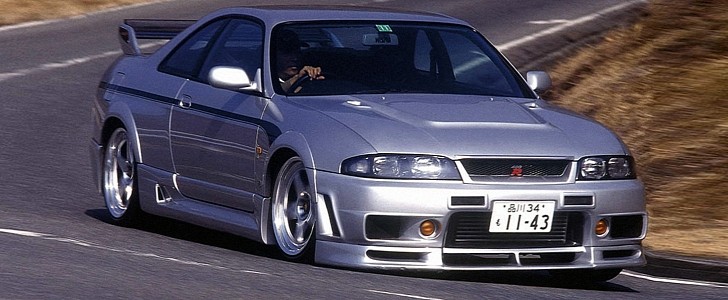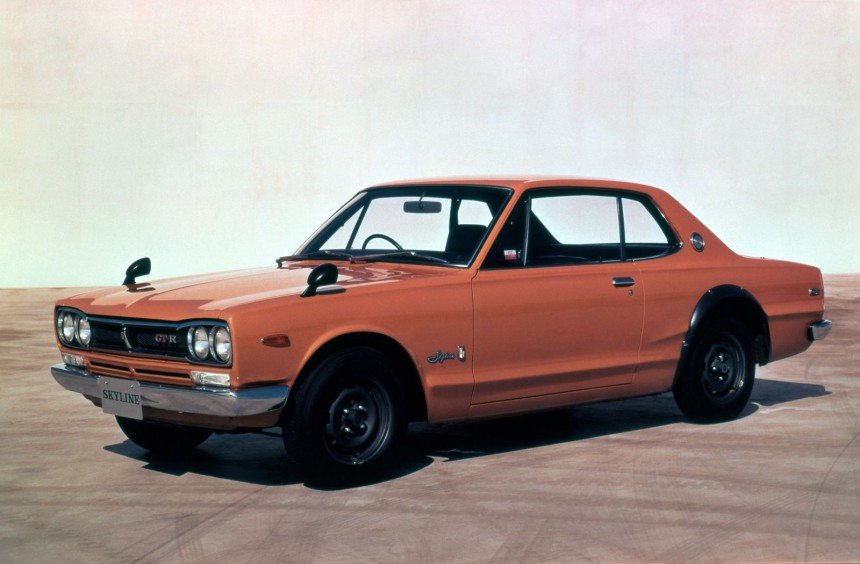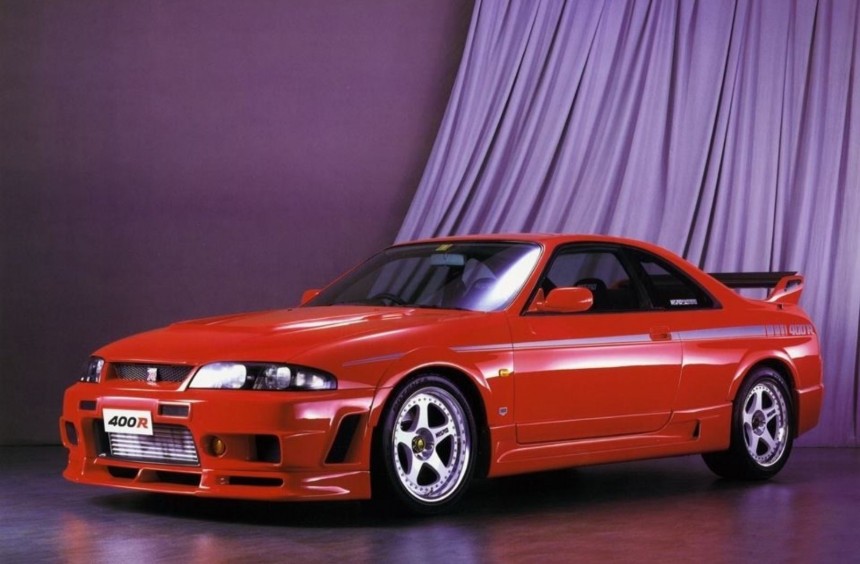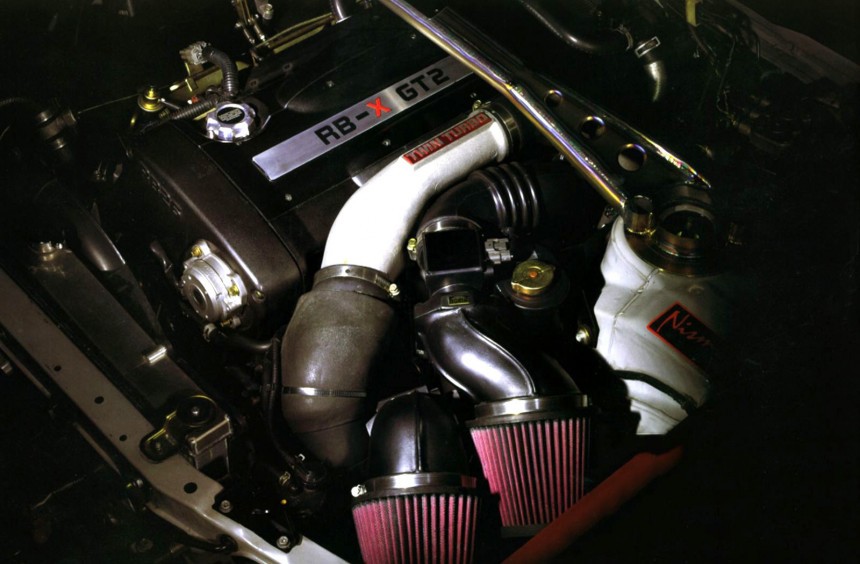Today, the GT-R Nismo is one of the most respected road-legal track weapons in the world. But back in the Skyline R33 days, there was another Nismo-tuned monster roaming the streets that seems to be forgotten by many so-called enthusiasts.
The Skyline nameplate which gained worldwide recognition in the early 2000s thanks to the original Fast and Furious movie and the Need for Speed: Underground video game series made its debut almost half a century earlier in Japan, being attributed by the Prince Motor Company to a luxury sedan. In the years that followed, the car became available as a two-door coupe, a convertible, and even a five-door delivery van but a true performance version came into being a decade later, two years after Prince merged with Nissan.
Unveiled at the Tokyo Motor Show in fall 1968, the Skyline GT-R began life as a 160-hp sedan, but a coupe variant was also introduced for the 1971 model year. Although road-legal, it was conceived with track performance in mind, so it was stripped of any unnecessary equipment to make it as light as possible. It received a completely new engine dubbed S20 that was similar in design to the GR8 unit used in the Prince R380 racecar.
The car became a cult hero in Japan, earning the nickname "Hakosuka", which is an amalgamation of the Japanese words for box and skyline. It was followed by the 1973 GT-R, a fastback coupe based on the fourth-generation Skyline but due to the oil crisis that crippled the country’s economy, it was discontinued 7 months after its debut.
With the demand for high-performance vehicles dwindling, the next three iterations of the Skyline didn’t feature a GT-R model. That changed in 1988 when the all-wheel-drive R32 was launched. It returned for the next two Skyline generations, then shed the venerable nameplate and morphed into an awesome grand tourer that quickly became everyone’s favorite supercar-killer.
Today, if you ask a JDM enthusiast to name three of his (or hers) favorite Skyline GT-R generations, the R33 will rarely make the cut, since its predecessors and iconic successor are without a doubt more popular.
Unfortunately, most people forget about a special, factory-tuned version or the R33 which was one of the most visceral Skyline GT-Rs ever produced.
Unveiled in 1997, it was called Nismo 400R, with R standing for Racing since it was developed by Nissan’s famed motorsport division as a tribute to the 1995 Le Mans race cars and their one-off, road-legal sibling. The digits come from its rated output of 400 hp, but the rabid 2.8-liter under its hood was actually capable of developing a little over 440 hp.
Designed and built by the engine wizards at REINIK (later renamed REIMAX), the RBX-GT2 powerplant was a bored and stroked version of the stock RB26DETT. To accommodate the increase in displacement and squeeze out more than 120 extra horses, the Japanese tuner replaced most of the stock internals with motorsport-derived components. These included a reinforced crankshaft, forged 87 mm pistons, sturdier conrods, polished ports, high-lift camshafts, a revamped lubrication system, and larger exhaust manifolds.
Nismo then added a pair of higher output turbochargers that were cooled down using a larger intercooler, designed a bespoke exhaust system that helped the six-cylinder sing an unmistakable tune, and linked the whole thing to a customized 5-speed manual with improved gear ratios.
The result was a 0-60 mph (0-97 kph) time of 3.8 seconds attained by Hot Rod Magazine during an independent test. Even more spectacular, the 400R could reach a top speed of over 186 mph (300 kph), according to Nissan but, to be fair, it was never backed up by an official run.
All the extra power had to be complemented by several chassis improvements and the engineers delivered. Equipped with Bilstein performance shocks, stiffer springs, an active limited-slip diff, and the rear-biased ATTESA E-TS Pro AWD system, the car was incredibly responsive, handling impeccably even by today standards. You can see just how well it drives in the onboard video below posted on YouTube by Sang Froid who takes it for a spin around the Nürburgring.
The R33 is remembered for being prone to understeer, a problem that affected the GT-R model to some extent but, according to those fortunate enough to drive this beast, it was impossible to lose front-wheel traction with the 400R, no matter how hard one tried.
Everything was packaged in an exclusive aero kit that made the car stand out from all other GT-Rs. The most recognizable features were the front bumper riddled with functional scoops that diverted air to the intercooler as well as the huge Brembo rotors, the new carbon fiber rear spoiler that improved downforce, and the set of gorgeous 18-inch LM GT1 forged alloy wheels wrapped in Bridgestone RE 710 tires.
Initially, Nismo planned to produce 100 units, but due to the low demand and high price tag, only 44 of them were sold. This makes it one of the rarest Skyline GT-R editions ever built, and a highly sought-after collectors’ item.
Although it is often forgotten by many so-called JDM fanatics nowadays, the 400R was by far the best limited-production variant of the R33 generation, as well as one of the most impressive Skyline-based models of all time, paving the way for future Nismo-tuned supercar-killers.
Unveiled at the Tokyo Motor Show in fall 1968, the Skyline GT-R began life as a 160-hp sedan, but a coupe variant was also introduced for the 1971 model year. Although road-legal, it was conceived with track performance in mind, so it was stripped of any unnecessary equipment to make it as light as possible. It received a completely new engine dubbed S20 that was similar in design to the GR8 unit used in the Prince R380 racecar.
The car became a cult hero in Japan, earning the nickname "Hakosuka", which is an amalgamation of the Japanese words for box and skyline. It was followed by the 1973 GT-R, a fastback coupe based on the fourth-generation Skyline but due to the oil crisis that crippled the country’s economy, it was discontinued 7 months after its debut.
Today, if you ask a JDM enthusiast to name three of his (or hers) favorite Skyline GT-R generations, the R33 will rarely make the cut, since its predecessors and iconic successor are without a doubt more popular.
Unfortunately, most people forget about a special, factory-tuned version or the R33 which was one of the most visceral Skyline GT-Rs ever produced.
Designed and built by the engine wizards at REINIK (later renamed REIMAX), the RBX-GT2 powerplant was a bored and stroked version of the stock RB26DETT. To accommodate the increase in displacement and squeeze out more than 120 extra horses, the Japanese tuner replaced most of the stock internals with motorsport-derived components. These included a reinforced crankshaft, forged 87 mm pistons, sturdier conrods, polished ports, high-lift camshafts, a revamped lubrication system, and larger exhaust manifolds.
Nismo then added a pair of higher output turbochargers that were cooled down using a larger intercooler, designed a bespoke exhaust system that helped the six-cylinder sing an unmistakable tune, and linked the whole thing to a customized 5-speed manual with improved gear ratios.
All the extra power had to be complemented by several chassis improvements and the engineers delivered. Equipped with Bilstein performance shocks, stiffer springs, an active limited-slip diff, and the rear-biased ATTESA E-TS Pro AWD system, the car was incredibly responsive, handling impeccably even by today standards. You can see just how well it drives in the onboard video below posted on YouTube by Sang Froid who takes it for a spin around the Nürburgring.
The R33 is remembered for being prone to understeer, a problem that affected the GT-R model to some extent but, according to those fortunate enough to drive this beast, it was impossible to lose front-wheel traction with the 400R, no matter how hard one tried.
Initially, Nismo planned to produce 100 units, but due to the low demand and high price tag, only 44 of them were sold. This makes it one of the rarest Skyline GT-R editions ever built, and a highly sought-after collectors’ item.
Although it is often forgotten by many so-called JDM fanatics nowadays, the 400R was by far the best limited-production variant of the R33 generation, as well as one of the most impressive Skyline-based models of all time, paving the way for future Nismo-tuned supercar-killers.


















